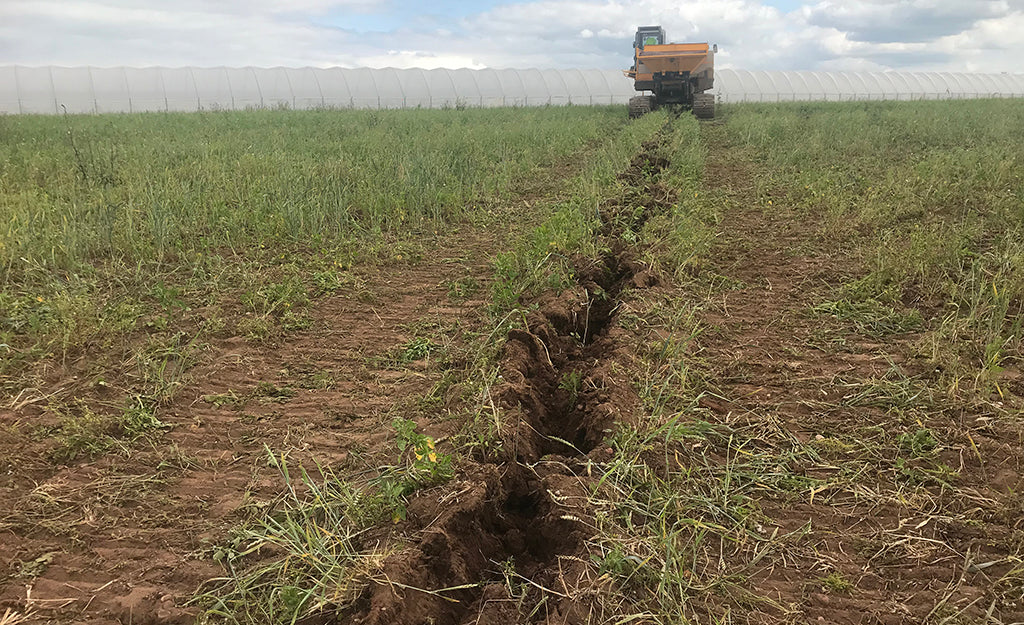Saturated soil is not only harmful to crop health, but also makes machinery use difficult — sometimes impossible. To overcome this, farmers rely on effective drainage systems to protect yields and maintain productivity. But what are the options available?
Contents
Natural drainage versus artificial drainage
Drainage can be either natural or artificial. Natural drainage occurs when excess water flows into nearby watercourses such as ponds, swamps, lakes, or rivers. However, natural drainage is often insufficient — especially as extreme weather becomes more frequent. Farmers therefore turn to man-made (artificial) drainage systems to keep land productive.
Artificial drainage comes in two main types: surface drainage and subsurface drainage.
Surface drainage versus subsurface drainage
Surface drainage removes excess water from the top of the land using shallow ditches (open drains) and by creating an artificial slope to improve runoff.
Subsurface drainage goes deeper, removing water from the root zone. This is achieved using buried land drainage pipe or deep open drains.
- Deep open drains – Designed to intercept both surface and subsurface water, these are deep excavated channels with sloping floors and sides.
- Land drainage pipes – Manufactured in clay, concrete, or plastic, these pipes are installed below ground. Clay and concrete types allow water to enter through joints, while plastic drainage coils feature perforations along their length for consistent water entry.
Which option is best – open drains or land drainage pipe?
Open Drains
Pros:
- Generally cheaper to install
Cons:
- Uses land that could otherwise grow crops
- Restricts machinery access — requires bridges or culverts for crossings
- Needs regular maintenance to prevent debris blockages and weed growth
Land Drainage Coil
Pros:
- No loss of cultivable land
- Minimal maintenance once installed
Cons:
- Higher installation cost
How can we help?
Our background is in farming, so we understand your needs — our MD’s family have been farmers for generations. We supply a wide range of high-quality drainage products at cost-competitive prices, including land drainage coil, twinwall pipe, and large diameter structured pipe.
Our team of specialists can provide expert advice for your project. Call us today on 0121 351 3230.
Alternatively, fill out our enquiry form:












